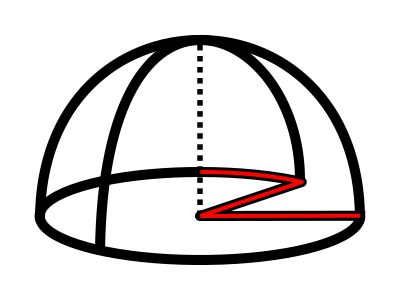Zennit (Zennit explains neural networks in torch) is a
high-level framework in Python using Pytorch for explaining/exploring neural
networks. Its design philosophy is intended to provide high customizability and
integration as a standardized solution for applying rule-based attribution
methods in research, with a strong focus on Layerwise Relevance Propagation
(LRP). Zennit strictly requires models to use Pytorch's torch.nn.Module
structure (including activation functions).
Zennit is currently under active development, but should be mostly stable.
If you find Zennit useful for your research, please consider citing our related paper:
@article{anders2021software,
author = {Anders, Christopher J. and
Neumann, David and
Samek, Wojciech and
Müller, Klaus-Robert and
Lapuschkin, Sebastian},
title = {Software for Dataset-wide XAI: From Local Explanations to Global Insights with {Zennit}, {CoRelAy}, and {ViRelAy}},
journal = {CoRR},
volume = {abs/2106.13200},
year = {2021},
}
The latest documentation is hosted at zennit.readthedocs.io.
To install directly from PyPI using pip, use:
$ pip install zennitAlternatively, install from a manually cloned repository to try out the examples:
$ git clone https://github.com/chr5tphr/zennit.git
$ pip install ./zennitAt its heart, Zennit registers hooks at Pytorch's Module level, to modify the
backward pass to produce rule-based attributions like LRP (instead of the usual
gradient). All rules are implemented as hooks
(zennit/rules.py) and most use the LRP basis
BasicHook (zennit/core.py).
Composites (zennit/composites.py) are a way
of choosing the right hook for the right layer. In addition to the abstract
NameMapComposite, which assigns hooks to layers by name, and
LayerMapComposite, which assigns hooks to layers based on their Type, there
exist explicit Composites, some of which are EpsilonGammaBox (ZBox in
input, Epsilon in dense, Gamma in convolutions) or EpsilonPlus (Epsilon
in dense, ZPlus in convolutions). All composites may be used by directly
importing from zennit.composites, or by using their snake-case name as key
for zennit.composites.COMPOSITES.
Canonizers (zennit/canonizers.py) temporarily
transform models into a canonical form, if required, like
SequentialMergeBatchNorm, which automatically detects and merges BatchNorm
layers followed by linear layers in sequential networks, or
AttributeCanonizer, which temporarily overwrites attributes of applicable
modules, e.g. to handle the residual connection in ResNet-Bottleneck modules.
Attributors (zennit/attribution.py) directly
execute the necessary steps to apply certain attribution methods, like the
simple Gradient, SmoothGrad or Occlusion. An optional Composite may
be passed, which will be applied during the Attributor's execution to
compute the modified gradient, or hybrid methods.
Using all of these components, an LRP-type attribution for VGG16 with batch-norm layers with respect to label 0 may be computed using:
import torch
from torchvision.models import vgg16_bn
from zennit.composites import EpsilonGammaBox
from zennit.canonizers import SequentialMergeBatchNorm
from zennit.attribution import Gradient
data = torch.randn(1, 3, 224, 224)
model = vgg16_bn()
canonizers = [SequentialMergeBatchNorm()]
composite = EpsilonGammaBox(low=-3., high=3., canonizers=canonizers)
with Gradient(model=model, composite=composite) as attributor:
out, relevance = attributor(data, torch.eye(1000)[[0]])A similar setup using the example script
produces the following attribution heatmaps:
![]()
For more details and examples, have a look at our documentation.
More heatmaps of various attribution methods for VGG16 and ResNet50, all
generated using
share/example/feed_forward.py, can be found
below.
See CONTRIBUTING.md for detailed instructions on how to contribute.
Zennit is licensed under the GNU LESSER GENERAL PUBLIC LICENSE VERSION 3 OR LATER -- see the LICENSE, COPYING and COPYING.LESSER files for details.


